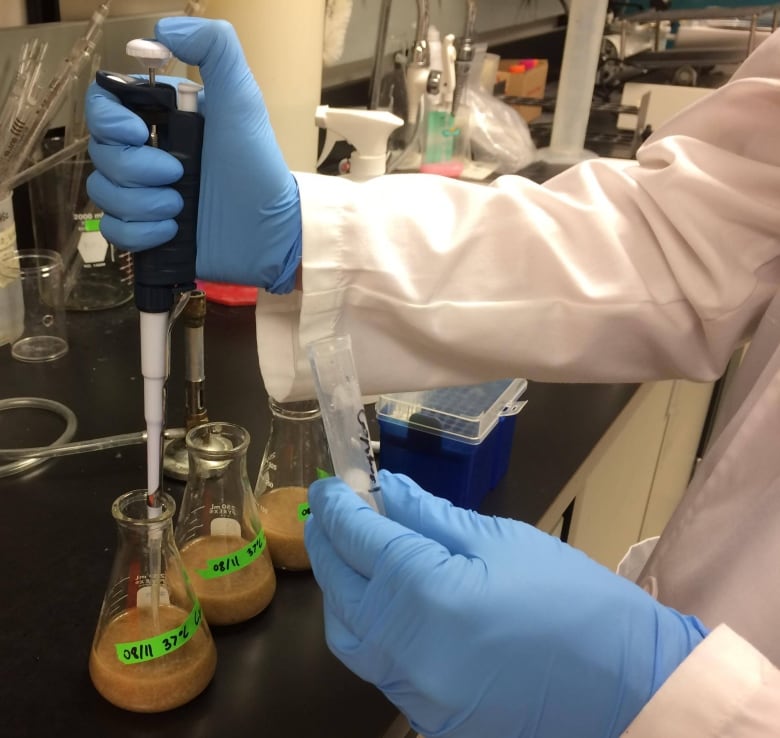Students fly in 'Vomit Comet' to test 3D-printing tools with recycled astronaut poo
'We developed a start-to-finish process, starting from astronauts fecal waste to the final bioplastic product'

A pair of University of Calgary students are back on Earth after taking their plastic poop project to the skies.
SchulichSchool of Engineering student AlinaKunitskaya, and Sam Wilton-Clark, a health sciences student,were part of the team that won a gold medal in December at the International Genetically Engineered Machine Foundation's giant jamboree in Boston for their work on turning feces into tools for astronauts as a way of reducing the amount of equipment they'd need to carry for a colonization of Mars.
"We came up with an idea of using genetically engineered bacteria to convert astronauts' fecal waste into a plastic product that can be used in a 3D printer to print useful items, for example tools for astronauts on Mars," Kunitskaya told the Calgary Homestretch on Wednesday.
"We developed a start-to-finish process, starting from astronauts fecal waste to the final bioplastic product."
Rather than use actual human waste, however, the team used a formula developed by NASA,which includes yeast, cellulose, peanut oil and miso paste.
The next part of their project happened Wednesday inside the Vomit Comet a jet flown to achieve zero gravity where they tested one of the steps involved in the process.

"Although our initial project was focused on [astronauts working on]Mars, astronauts are going to face similar challenges on the way to Marsand they're still going to be producing fecal waste, obviously, on their way to Mars while they are in zero gravity, so we still want to be able to transfer their waste product into something useful while they're transiting."
And the Vomit Comet lived up to its name.
"I kind of have a bit of a weak stomach so I knew I would probably get sick and worked through that," said Kunitskaya. "I actually felt fine during the microgravity portion, it was afterward that made me feel sick."
The experiment was deemed a success, as "everything operated as expected and we were able to do all the procedures," said Kunitskaya, but the team will have to spend time poring over the data collected before final results will be known.

"The big purpose of this project is to prove the feasibility of the process we proposed for a particular step of our big process," she said. "If our hypothesis is right, then we can further develop that process for our application and also look for applications on Earth. If our hypothesis was wrong, we might have to look for different options."
Kunitskaya says she has a "good feeling" about future success.
"It does work on Earth, so in microgravity it's just a matter of optimizing that process," she said.
The team will now prepare a paper on the experiment and will present their findings at a conference in Bremen, Germany later this year.
- MORE CALGARY NEWS|Chicken on the Way offers 60 per cent off to mark 60 years in Calgary
- MORE CALGARY NEWS|Calgary gets its 1st permanent Pride crosswalk
- Read more articles byCBC Calgary, like us onFacebookfor updates and subscribe to ourCBC Calgary newsletterfor the day's news at a glance.












_(720p).jpg)


 OFFICIAL HD MUSIC VIDEO.jpg)
.jpg)



























































































